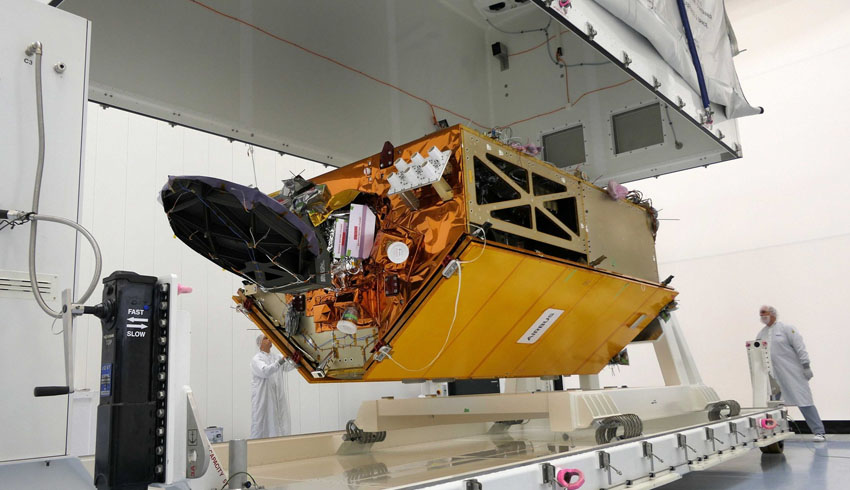The acoustic noise test simulates the sound impact to which the satellite will be exposed during rocket launch. The chamber, which covers an area of some 100 square metres and is fitted with huge loudspeakers, is hermetically sealed during tests.
These tests consist of four 60-second blasts of sound that are fired at the satellite with increasing intensity. At its peak, Sentinel-6A will be hit by 140 decibels (dB).
By comparison, noise levels at around 50 dB are pleasant for us to hear, at some 100 dB they start to become uncomfortable, while around 120 dB is where they become painful.
Pneumatic drills or chainsaws produce around 110 dB. An increase of 10 dB represents a doubling of perceived loudness.
‘Copernicus Sentinel-6’ is an ocean altimetry mission to provide ocean topography measurements over the next decade. Sentinel-6 carries a radar altimeter to provide high precision and timely observations of sea surface height on a global scale.
This information is essential for the continued monitoring of changes in sea levels, a key indicator of climate change. It is also essential for oceanography.
Mapping up to 95 per cent of Earth’s ice-free ocean every 10 days, Sentinel-6 offers vital information on ocean currents, wind speed and wave height for maritime safety.
The two Sentinel-6 satellites for the European Copernicus Program for environment and security have been developed under Airbus’ industrial leadership. While it is one of the European Union’s family of Copernicus satellite missions, Sentinel-6 is also being brought about thanks to international co-operation between ESA, NASA, NOAA and EUMETSAT.
From November 2020, Sentinel-6A will be the first of two Sentinel-6 satellites to continue collecting satellite-based measurements of the oceans’ surfaces, a task that began in 1992.
Sentinel-6B is then expected to follow in 2025. Sentinel-6 builds on heritage from the Jason series of ocean topography satellites and from ESA’s missions CryoSat-2 and Sentinel-2, as well as GRACE, which were manufactured under the industrial leadership of Airbus.

